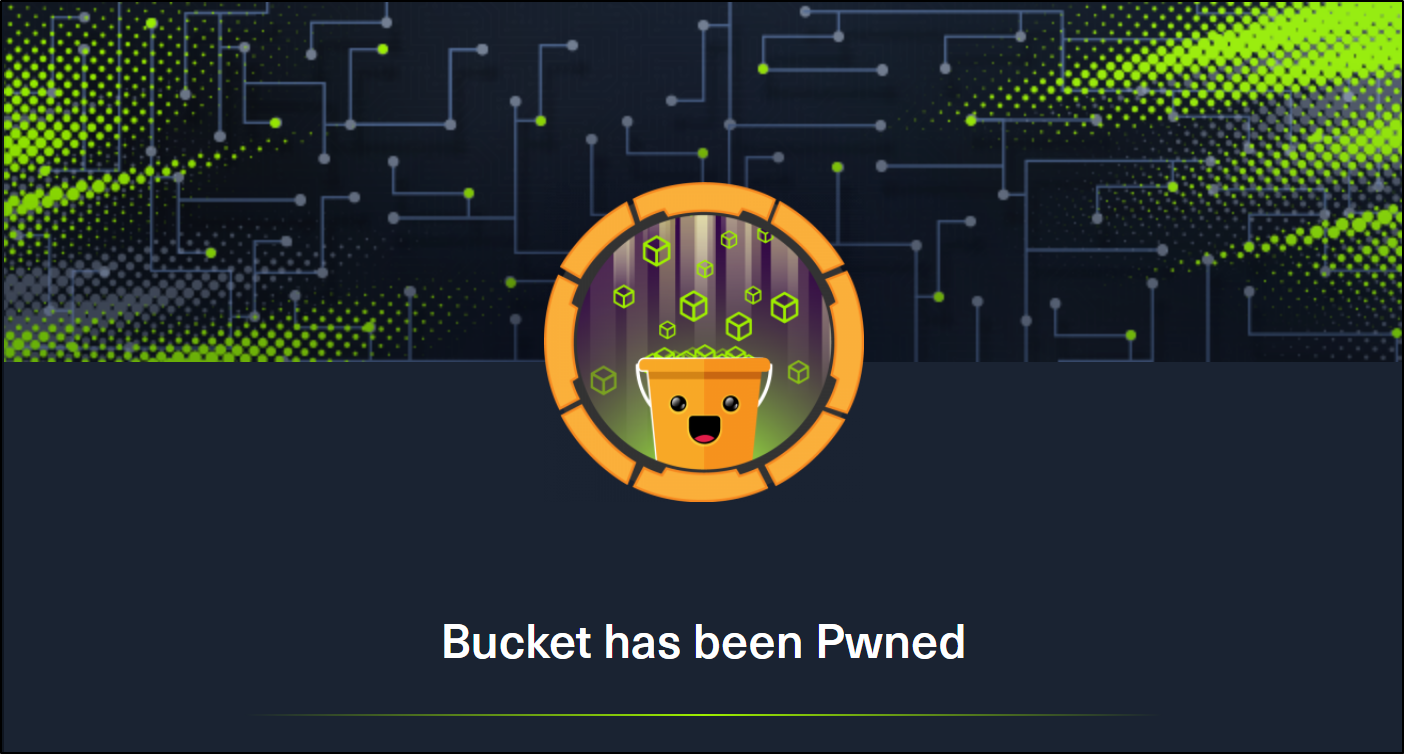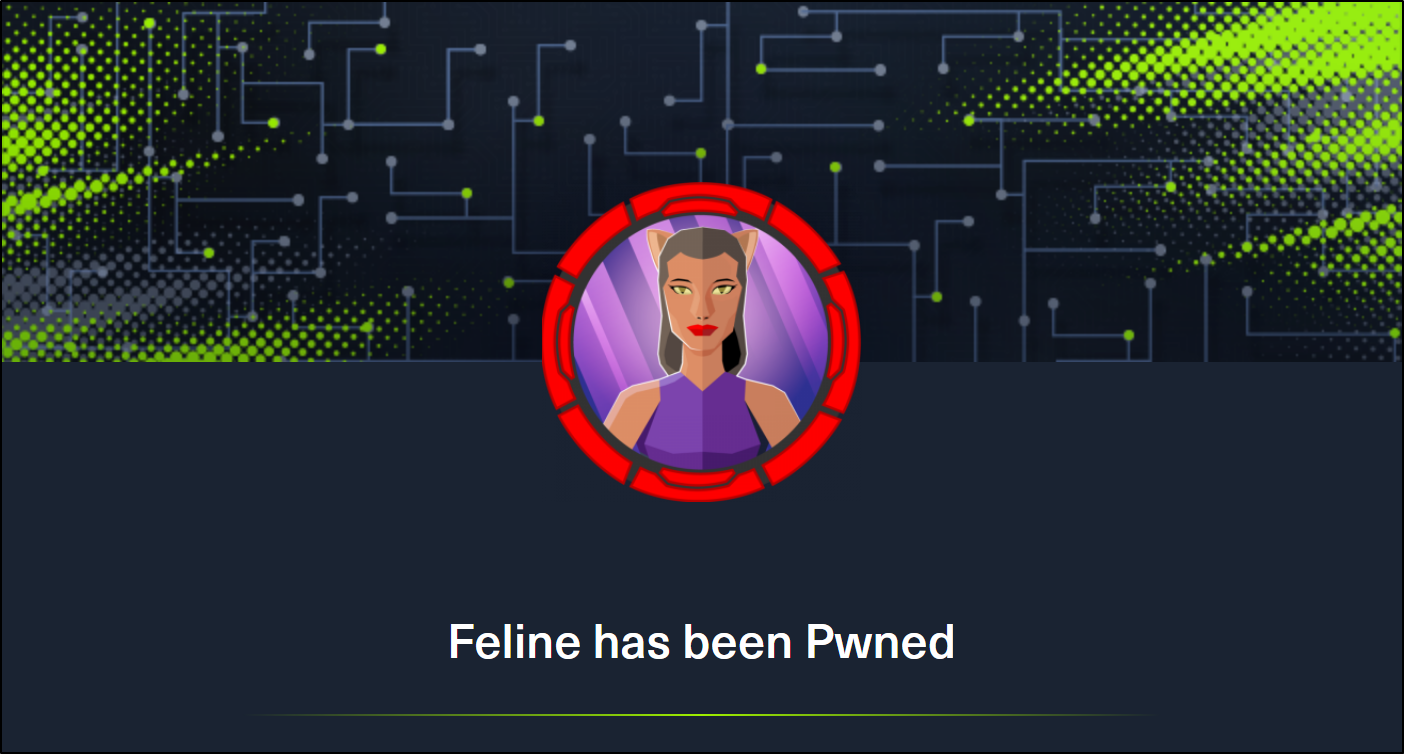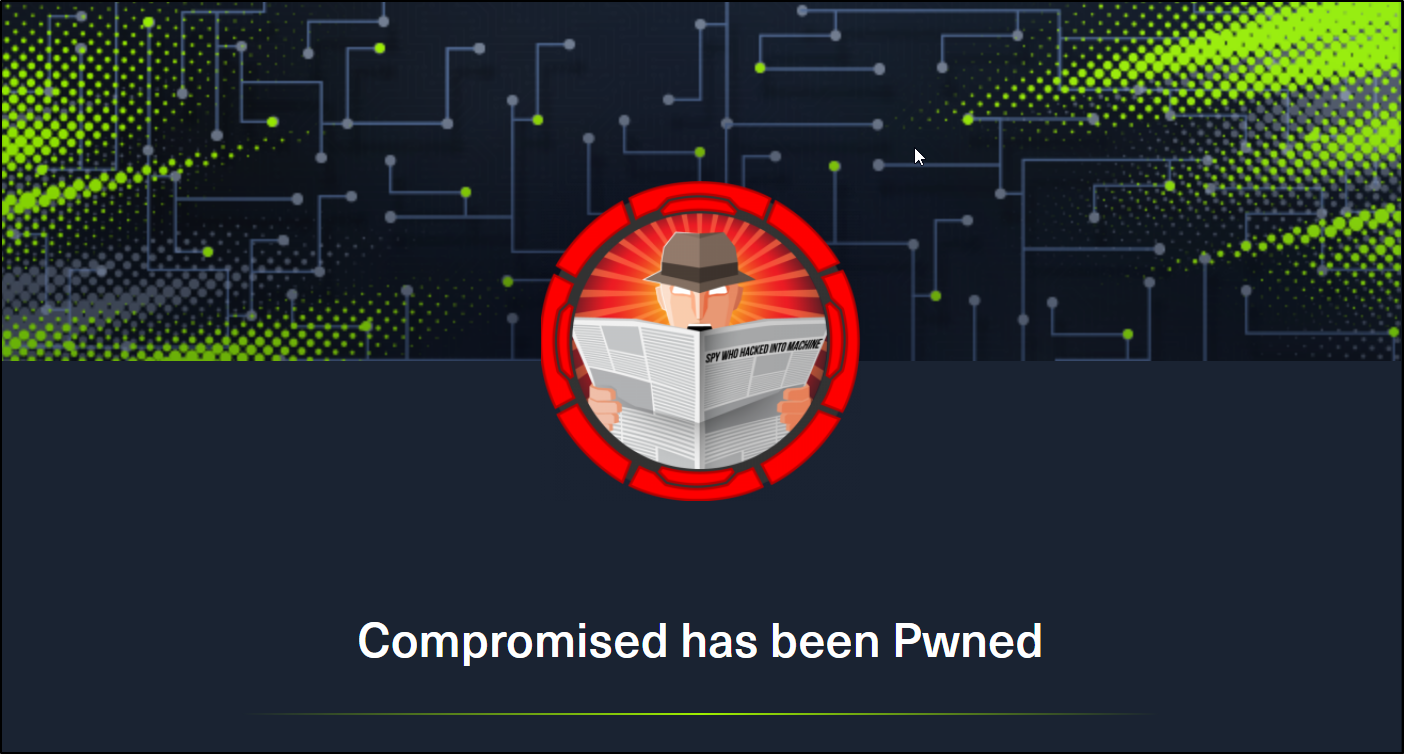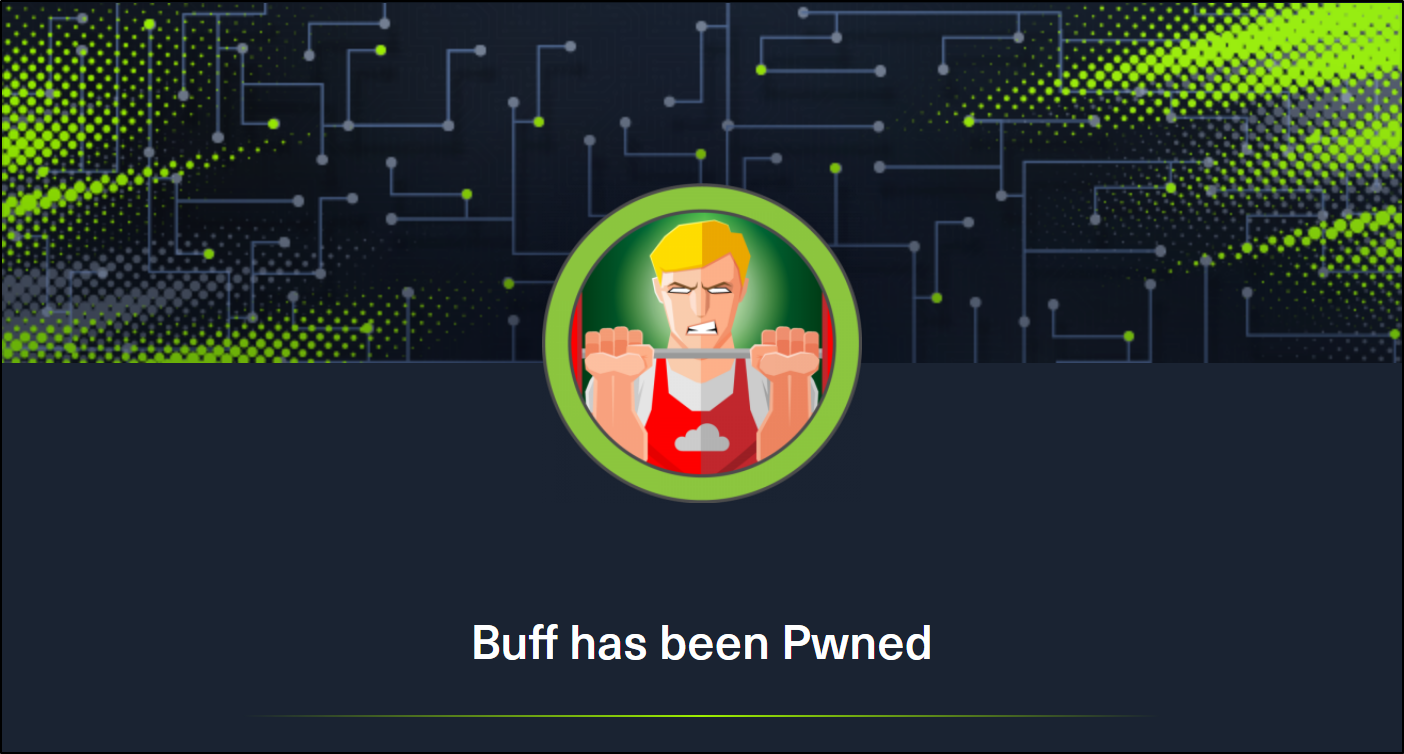Bucket Walkthrough - Hack The Box

 Bucket is a Medium difficulty rated machine form Hack the Box. After scanning we find that there are two virtual hosts running on port 80. One appears to be an Amazon S3 deployment that we later find to also be hosting a DynamoDB instance. The services are not properly secured and we are able to use the AWS command line interface to get credentials from the users table in DynamoDB and then to upload a command shell to the bucket.htb site. Matching up password reuse to one of the machine users to credentials that we found in the database, we are able to ssh to our first user. We then find code for an incomplete internal web application. After some code review, we find a way to trick the application into extracting the root users private SSH key.
Bucket is a Medium difficulty rated machine form Hack the Box. After scanning we find that there are two virtual hosts running on port 80. One appears to be an Amazon S3 deployment that we later find to also be hosting a DynamoDB instance. The services are not properly secured and we are able to use the AWS command line interface to get credentials from the users table in DynamoDB and then to upload a command shell to the bucket.htb site. Matching up password reuse to one of the machine users to credentials that we found in the database, we are able to ssh to our first user. We then find code for an incomplete internal web application. After some code review, we find a way to trick the application into extracting the root users private SSH key.
 Academy is an Easy rated difficulty machine from Hack the Box. This machine is a lot of fun and starts out by giving us an opportunity to hack into a dummy version of their new Academy platform. We will find that the sites registration process is insecure. This leads to access to the admin page. From here we find another virtual host with a Laravel deployment. This leads to remote code execution and our initial foothold. We are then able to SSH to our first user using the password used for the database connection. From this account we hunt through system logs to expose a password to a user that is able to sudo the composer binary, resulting in root access.
Academy is an Easy rated difficulty machine from Hack the Box. This machine is a lot of fun and starts out by giving us an opportunity to hack into a dummy version of their new Academy platform. We will find that the sites registration process is insecure. This leads to access to the admin page. From here we find another virtual host with a Laravel deployment. This leads to remote code execution and our initial foothold. We are then able to SSH to our first user using the password used for the database connection. From this account we hunt through system logs to expose a password to a user that is able to sudo the composer binary, resulting in root access.
 Feline is a Hack the Box machine that is rated Hard on their difficulty scale. This machine will be a challenge for many and will require attention to detail and likely a lot of research. We will start by finding out that there is an Apache Tomcat 9.0.27 deployment running that is hosting a site that allows for uploading files. We then find that the machine is vulnerable to CVE-2020-9484 – a vulnerability with insecure deserialization that when paired with Apache PersistenceManager can result in remote code execution. We are then able to get our initial shell and find that the machine is using a stool called SaltStack that is also vulnerable to RCE. This allows us to get a shell as the root user on a container that is hosted by the machine. The host allows for containers to utilize the Docker.Sock Unix socket, and we are able to breakout of the container using the Docker API.
Feline is a Hack the Box machine that is rated Hard on their difficulty scale. This machine will be a challenge for many and will require attention to detail and likely a lot of research. We will start by finding out that there is an Apache Tomcat 9.0.27 deployment running that is hosting a site that allows for uploading files. We then find that the machine is vulnerable to CVE-2020-9484 – a vulnerability with insecure deserialization that when paired with Apache PersistenceManager can result in remote code execution. We are then able to get our initial shell and find that the machine is using a stool called SaltStack that is also vulnerable to RCE. This allows us to get a shell as the root user on a container that is hosted by the machine. The host allows for containers to utilize the Docker.Sock Unix socket, and we are able to breakout of the container using the Docker API.
 Jewel is a Medium difficulty rated machine at HackTheBox. This machine will challenge your enumeration skills. It will start with finding a Git repository that is browsable over http on port 8000. We also find that there is a Blog hosted on port 8080. We are able to confirm that the files in the Git repo are the same used for the blog. This leads to us fingerprinting the Ruby on Rails version that is running the Blog site. We are able to find that this version of Rails has an insecure data deserialization vulnerability that leads to our foothold. Through enumeration we are able to find the password as well as the secret to the two-factor authentication that is enabled on the foothold account. This leads to us being able to sudo the gem binary to get a shell as the root user.
Jewel is a Medium difficulty rated machine at HackTheBox. This machine will challenge your enumeration skills. It will start with finding a Git repository that is browsable over http on port 8000. We also find that there is a Blog hosted on port 8080. We are able to confirm that the files in the Git repo are the same used for the blog. This leads to us fingerprinting the Ruby on Rails version that is running the Blog site. We are able to find that this version of Rails has an insecure data deserialization vulnerability that leads to our foothold. Through enumeration we are able to find the password as well as the secret to the two-factor authentication that is enabled on the foothold account. This leads to us being able to sudo the gem binary to get a shell as the root user.
 Doctor is an easy difficulty rated Linux machine from Hack the Box. This machine will teach us how to find and exploit a Server-Side Template Injection vulnerability on a Python Flask server using the Jinja2 template engine. We are able to exploit the SSTI vulnerability to get a reverse shell. This leads to us finding the credentials required to exploit the Splunk Universal Forwarder using the SplunkWhisperer script.
Doctor is an easy difficulty rated Linux machine from Hack the Box. This machine will teach us how to find and exploit a Server-Side Template Injection vulnerability on a Python Flask server using the Jinja2 template engine. We are able to exploit the SSTI vulnerability to get a reverse shell. This leads to us finding the credentials required to exploit the Splunk Universal Forwarder using the SplunkWhisperer script.
 Worker is a medium rated difficulty machine from Hack the Box. This machine will test our ability to properly enumerate a system. Our initial scan will show us that a subversion repository (SVN) service is running on port 3690. Enumeration of this leads to us finding multiple subdomains of worker.htb, one of them being a deployment of Azure DevOps. In Azure DevOps we are able to use built in functionality that allows for us to upload an ASPX web shell to one of the site directories, resulting in command execution. We then turn this into a stable reverse shell and enumeration leads to more credentials that to an account that has access to Azure DevOps pipelines. We then use this functionality to spawn a reverse shell as the system user.
Worker is a medium rated difficulty machine from Hack the Box. This machine will test our ability to properly enumerate a system. Our initial scan will show us that a subversion repository (SVN) service is running on port 3690. Enumeration of this leads to us finding multiple subdomains of worker.htb, one of them being a deployment of Azure DevOps. In Azure DevOps we are able to use built in functionality that allows for us to upload an ASPX web shell to one of the site directories, resulting in command execution. We then turn this into a stable reverse shell and enumeration leads to more credentials that to an account that has access to Azure DevOps pipelines. We then use this functionality to spawn a reverse shell as the system user.
 Compromised is a Hard rated Linux machine from Hack the Box. This machine was created to run like an already compromised machine. We will be challenged to thoroughly enumerate the system, looking for clues of how the previous attacker compromised the machine, and reusing the attackers work along the way. We first find a backup of the website files. This leads to the LiteCart admin and database credentials. We then take advantage of an arbitrary file upload vulneravility to upload a MySQL web shell. This leads to us finding the attackers user defined function that helps us get our initial shell. We then enumerate to find credentials that allow us to ssh as the first user. Through more enumeration we find that the attacker created a PAM backdoor that we decompile to find a working root password.
Compromised is a Hard rated Linux machine from Hack the Box. This machine was created to run like an already compromised machine. We will be challenged to thoroughly enumerate the system, looking for clues of how the previous attacker compromised the machine, and reusing the attackers work along the way. We first find a backup of the website files. This leads to the LiteCart admin and database credentials. We then take advantage of an arbitrary file upload vulneravility to upload a MySQL web shell. This leads to us finding the attackers user defined function that helps us get our initial shell. We then enumerate to find credentials that allow us to ssh as the first user. Through more enumeration we find that the attacker created a PAM backdoor that we decompile to find a working root password.
 Omni is an easy rated machine running Windows IoT Core. We will identify the OS after our scan by finding a Windows Device Portal installation found on port 8080. After doing some quick Googling for vulnerabilities on this operating system, we find that the OS has a vulnerable service named Sirep Test Service that allows for remote code execution. We will use this vulnerability to export system account hashes. We then crack these hashes, and use them to login to the Windows Device Portal where we will be able to spawn a reverse shell. Enumeration of the file system leads to a series of juicy information in a PowerShell Secure String format. We will then need to decrypt PowerShell secure strings, resulting in having credentials and flags to both the user and administrator accounts.
Omni is an easy rated machine running Windows IoT Core. We will identify the OS after our scan by finding a Windows Device Portal installation found on port 8080. After doing some quick Googling for vulnerabilities on this operating system, we find that the OS has a vulnerable service named Sirep Test Service that allows for remote code execution. We will use this vulnerability to export system account hashes. We then crack these hashes, and use them to login to the Windows Device Portal where we will be able to spawn a reverse shell. Enumeration of the file system leads to a series of juicy information in a PowerShell Secure String format. We will then need to decrypt PowerShell secure strings, resulting in having credentials and flags to both the user and administrator accounts.
 Buff is an easy rated Windows machine from HackTheBox. After our scan, we find that there is a Gym Management System 1.0 deployment running on port 8080. We find some documentation around a known vulnerability in this tool that allows for unauthenticated remote code execution. We are then able to use this exploit to gain a foothold. After some enumeration of the system, we find that an application called CloudMe is running internally on port 8888, and naturally given the name we find that this is vulnerable to a buffer overflow that we will exploit to get system administrator access.
Buff is an easy rated Windows machine from HackTheBox. After our scan, we find that there is a Gym Management System 1.0 deployment running on port 8080. We find some documentation around a known vulnerability in this tool that allows for unauthenticated remote code execution. We are then able to use this exploit to gain a foothold. After some enumeration of the system, we find that an application called CloudMe is running internally on port 8888, and naturally given the name we find that this is vulnerable to a buffer overflow that we will exploit to get system administrator access.